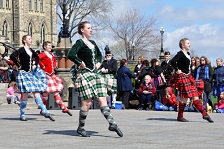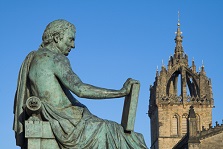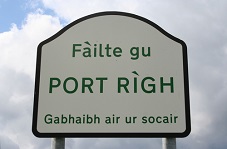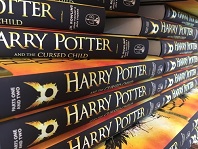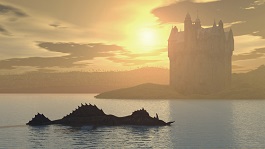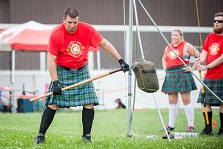Scottish Art 101

Art -
[CC-BY-SA-2.5 (http://creativecommons.org/licenses/by-sa/2.5)], via Wikimedia Commons


By Rosser1954 at en.wikipedia
[Public domain or Public domain], from Wikimedia Commons


Scottish Art 101
Art might not be the first thing that comes to your mind when you think about Scotland. However, there is some fantastic art to be found in Scotland's past as well as in its present days. Like many other countries, Scottish art was influenced by the art from the European mainland as well as by art from England. At some times in Scotland's history, Scotland wanted nothing to do with England (and considering current politics, some might say that this is still the case!), which is also reflected in various pieces of art. Let's have a brief look at the various stages in Scotland's art.
Ancient Scottish art
Carved stone balls (petrospheres), something that seems to be unique to Scotland, are the oldest pieces of art that have been found in Scotland. It is assumed that the carved stone balls were seen as a sign of power or prestige. They come from prehistoric times, and might have been in use in the Iron Ages, too. More than 400 of those stone balls have been found and can be seen in some of Scotland's museums.
Stones played an important role in ancient Scotland in general, and many stone carvings have been found, e.g. cup and ring marks on rocks and carving on lithic burial sites.
During the Iron Age, when Scotland was influenced by the La Tene culture, other pieces of art started to emerge, e.g. elaborate gold torcs.
Middle Ages
When it comes to the Middle Ages in Scotland and the art from that era, you need to know that Scotland was kind of divided in four distinct cultural area. There were the Picts, the Gaelic, the British descendants of people from “The Old North” and the Angles. While they were regionally reasonably close together, they produced different types of art.
The Pictish stones are a good example of Scottish art from the Middle Ages. Pictish stones can mainly be found in the North and East of Scotland and were usually covered in complex carvings. Pictish art seems to be the one that is the easiest to identify from the four styles. The main focus of art during the early middle ages was on brooches, necklaces, and metalwork.
Of course, the Middle Ages were also a time of many changes on the European continent. It was only natural that those changes also made their way to Scotland.
The illumination of manuscripts was quite popular in Scotland, and most works were – as in other European countries – of a religious nature. Even though paintings were also done, only very few paintings from the Scottish Middle Ages have survived. Why? Read on to find out!
The Reformation
While the reformation is an important part of human history, some parts of it have not been very good for art in general. The iconoclasm is the reason why the once so colorful and beautiful interiors of Scottish churches turned into rather dull and gray places. It was not seen as good to have paintings, sculptures and other pieces of art in a church – so they were either moved or destroyed. This led to an immense loss of art that must have been very beautiful.
The iconoclasm also meant that artists that had been working for churches had to look for other people to work for. This led to a change in what the artists painted and sculpted and the focus moved from religious motives to a variety of other themes. Especially portrait painting for rich and influential people turned into a quite profitable job for painters.
Painted ceilings and wonderful carvings were now something that moved from churches to more secular places like fortresses, castles and the homes of people who were able to afford the services on an artist.
Art in modern Scotland
From bronze sculptures to landscape paintings and modern art that only the painter will ever understand: You can find everything in the modern art scene in Scotland. In modern times, it is quite hard to describe what makes one country's art stand out from the rest of the countries. One thing that is noticeable about Scottish art (and in general British art – though the Scots do not like hearing that) these days is that there is a revival of old Gaelic themes. You can find many modern artists who paint Gaelic designs or who have their own interpretation.
Of course, you will also find a lot of art that has something to do with the independence Scotland would so much like to have from England (and some of it is not very flattering for the English).
The most famous place for modern art is the Glasgow school (which is not just one school but a collection of various art schools in Glasgow) as many famous modern Scottish artists had learned their art there.
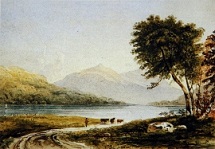

_(2).jpg)
